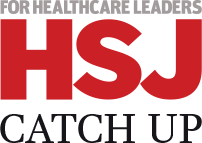The NHS reforms have distracted the people responsible for protecting the population against the threat of a pandemic, says Richard Coker
How a government organises itself to protect the population against the threat of pandemic influenza is rarely studied by academics or commented on in Parliament or in the media.
While there is no doubt that those within the NHS and the public health community take the nature of the threat seriously, their efforts are often hampered by the perpetual reorganisation of the state’s apparatus and more recently, the NHS in England.
‘The public health community’s efforts to protect the population are often hampered by the perpetual reorganisation of the state’s apparatus’
A recent report for the Centre for Health and the Public Interest looked at the impact that changes to the NHS in England following the Health and Social Care Act 2012 had on the health service’s ability to respond to pandemic influenza. Despite not questioning the Department of Health’s proposed approach to policy, it does identify three potential problems.
Impact of reforms
First, NHS reforms have destabilised those responsible for strategies to protect the public against pandemic influenza. The Institute for Government estimates that it takes two years for an agency to recover from a major reorganisation but few government shake-ups have been so profound and wide ranging as that of the NHS. None of the agencies that coordinated or delivered the response to the last pandemic in 2009 now exist.
‘None of the agencies that coordinated or delivered the response to the last pandemic now exist’
The National Audit Office found that across the entire health system approximately 10,000 staff were made redundant after the reforms.
With the creation of Public Health England and the shift of public health directors from the NHS to local authorities, virtually no public health professional will have the same employer now as they had in 2012. In a crisis situation well established personal relationships, institutional knowledge and organisational networks are crucial to ensure an effective response. The 2012 reforms disrupted these networks and it will take time to recover.
Chain of command
Second, the new system has resulted in a lack of clarity about who is responsible for what and who is accountable to whom. After the reforms “any attempt to draw an organogram of how the English health system is now meant to operate is a serious challenge”, according to The Four Health Systems: learning from each other report. Yet, having a clear line of sight from the centre of government with a clear chain of command down to frontline healthcare providers is critical to responding effectively to any emergency, the report says.
‘Having a clear line of sight from the centre of government to frontline healthcare providers is critical to responding effectively to any emergency’
Under the new NHS in England, the responsibility and the resources for coordinating a response are now split within a tripartite structure, meaning that those department decision makers who have to coordinate a response are now reliant on public health expertise based in two separate organisations − local authorities and Public Health England.
This tripartite structure also has three separate ways to report back to the centre of government. The administrative boundaries of these organisations do not always coincide geographically, which proves difficult to combine or coordinate at a local level.
Barriers to emergency coordination
Thirdly, the move to a market based system of healthcare provision under the act will lead to a NHS structure underpinned by contracts between the state and a range of competing providers of healthcare. This will make it more difficult to coordinate healthcare services in an emergency.
‘The standard NHS contracts do not outline what providers are required to do in a pandemic’
In an influenza pandemic, hospital services must be able to deliver “surge capacity” − to provide extra beds to ventilate and treat the sick, and shift resources away from routine admissions. A market based system prioritises efficiency in the provision of routine services, meaning there is always an incentive to minimise excess capacity. The standard NHS contract, used to specify what services a provider should deliver under normal circumstances, does not outline what providers are required to do in a pandemic.
Under the act, emergency powers are granted to the secretary of state to override these contractual arrangements. But there is no clarity about how these powers would work in practice and it is unlikely that for-profit providers now delivering NHS care will be willing to do something different or extra without remuneration.
Providers must collaborate
If a response to a pandemic is to be successful, healthcare providers need to view themselves as collaborators not competitors. In the highly competitive, market based US healthcare system, many hospitals refuse to collaborate and share bed availability data with their rival hospitals, even in a disaster.
‘Consideration should be given to capacity, coordination and clarity to give the NHS the best possible chance of dealing with an influenza outbreak’
The provision of routine healthcare services for the population should not be driven solely by the threat of a pandemic. Promoting patient choice while dealing with dwindling resources and rising demand are also important.
However, given the acknowledged magnitude of the threat, consideration should be given to building sufficient capacity, coordination and clarity within the new structure to give the NHS the best possible chance of dealing with a major influenza outbreak.
The structure of the NHS in 1948 and the highly successful Public Health Laboratory Service both emerged from the successful response to a major national emergency. In contrast, the structure of the NHS after the 2012 reforms appears fragmented and questions about the capacity for coordination from the centre to the front line remain.
Richard Coker is professor of public health at the London School of Hygiene and Tropical Medicine



























No comments yet